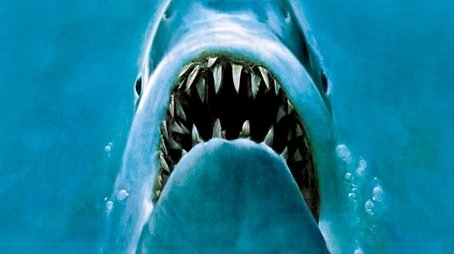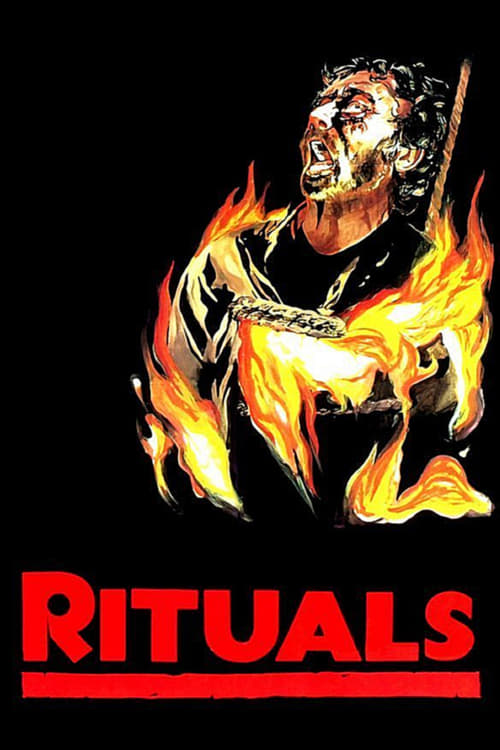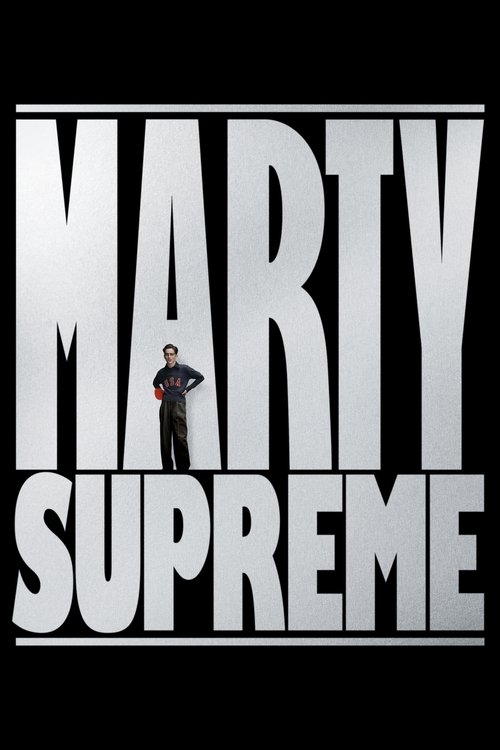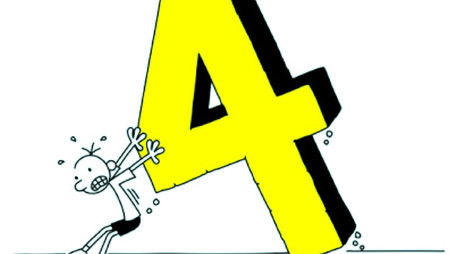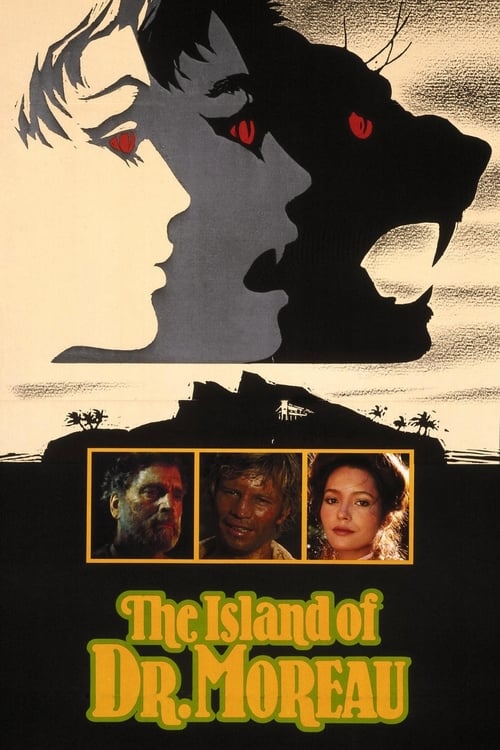
Ask Your Own Question
What is the plot?
On a dark summer night in 1974, the serene beaches of Amity Island, a small New England resort town, are shattered by terror. A young woman named Chrissie Watkins ventures out for a late-night swim beneath the moonlit sky. Alone and vulnerable, she is suddenly seized by an unseen force beneath the waves, dragged down into the cold depths by a monstrous great white shark. Her frantic screams echo faintly before silence returns to the ocean, leaving only a bloodstained beach behind.
The next morning, Chief Martin Brody, the recently appointed police chief of Amity Island, is introduced as he surveys the scene with grim concern. Brody is a city transplant, having moved his family from New York City seeking a safer, quieter life. His wife Ellen and their two sons, Michael and Sean, live with him in a modest home near the shore. Brody's protective instincts flare as he learns of the mysterious disappearance of Chrissie, whose torn bathing suit is found abandoned on the beach.
At the town hall, Mayor Larry Vaughn, a portly, smooth-talking politician, dismisses Brody's growing unease. Vaughn is obsessed with protecting Amity's lucrative summer tourist economy and insists the beaches remain open, fearing that any hint of danger will drive visitors away. Under pressure, the coroner initially confirms a shark attack but is coerced into changing Chrissie's cause of death to a boating accident, a cover-up designed to prevent panic.
Brody is unconvinced and calls in Matt Hooper, a young, enthusiastic oceanographer and ichthyologist from the Oceanographic Institute. Hooper arrives with scientific certainty, examining Chrissie's remains and confirming that a great white shark is responsible. He shows Brody the massive bite marks and explains the terrifying implications: this is no ordinary shark, but a massive predator prowling the waters near Amity.
Despite Hooper's warnings, Mayor Vaughn continues to resist closing the beaches. The town's Fourth of July weekend approaches, promising a flood of tourists eager to enjoy the sun and surf. Brody's pleas are ignored, and the beaches remain crowded, setting the stage for further tragedy.
The shark strikes again with brutal efficiency. A young boy named Alex Kintner is swimming near the shore when the shark attacks, pulling him under in full view of horrified beachgoers. The water churns red with blood, and the joyous holiday atmosphere turns to chaos. Brody rushes to the scene, his worst fears confirmed.
The town is thrown into turmoil. Mayor Vaughn grudgingly agrees to post a $3,000 bounty for the shark's capture or killing, hoping to appease the frightened public without shutting down the beaches. Meanwhile, Brody and Hooper investigate further, discovering the sunken boat of local fisherman Ben Gardner. Hooper dives beneath the waves in a shark-proof cage to inspect the wreck, finding a large shark tooth embedded in the hull and Gardner's severed head floating nearby. The evidence is irrefutable: the shark is enormous and deadly.
Fishermen refuse to risk their lives hunting the beast, but then Quint enters the story. Quint is a grizzled, weather-beaten seaman with a fierce reputation as a shark hunter. He offers to kill the shark for $10,000, his voice gravelly and full of menace. At a tense town meeting, Quint delivers a chilling monologue recounting his harrowing experience aboard the USS Indianapolis during World War II, where he survived a shark attack that claimed many of his shipmates. His story reveals the depth of his obsession and the personal vendetta driving him.
Brody, Hooper, and Quint join forces aboard Quint's boat, the Orca, to hunt the great white. The three men form an uneasy alliance, their personalities clashing but united by a common goal. The tension aboard the Orca is palpable, underscored by John Williams' iconic, ominous score.
Their first encounter with the shark is terrifying. Quint harpoons the beast several times, but the attacks are mere pinpricks to the massive creature. The shark retaliates fiercely, towed the Orca further out to sea and attacking the boat repeatedly. The crew's fear escalates as the shark's power becomes undeniable.
During one attack, Hooper dons scuba gear and descends in a shark-proof cage to inject the shark with poison using a harpoon syringe. Quint warns that the needle is too small to penetrate the shark's tough hide, but Hooper insists on trying. The shark attacks with brutal ferocity, destroying the cage and forcing Hooper to hide in a reef to survive. Brody and Quint haul up the wreckage, fearing Hooper is dead.
In a shocking and brutal moment, the shark leaps onto the sinking stern of the Orca, nearly capsizing the boat. Quint and Brody cling desperately to the cabin as the vessel is upended. Quint loses his grip and is dragged underwater by the shark, swallowed whole in a gruesome death that leaves Brody alone and terrified.
With the Orca sinking and Quint gone, Brody faces the shark alone. He climbs the mast with a compressed air tank, his last hope. As the shark charges, Brody shoves the tank into its gaping mouth and fires his rifle repeatedly. The tank explodes inside the shark's jaws in a massive blast of blood and water, killing the beast.
The ocean calms. Hooper resurfaces, alive but shaken, and he and Brody paddle back to shore on makeshift rafts, survivors of a harrowing ordeal. The film ends definitively with the shark's death and the survivors returning to land, the terror finally over.
Throughout the story, the tension builds steadily from the opening night attack through the escalating deaths--Chrissie Watkins, Alex Kintner, Ben Gardner, a boater in the lagoon, and Quint himself--each death underscoring the shark's relentless menace. The conflicts between Brody and Mayor Vaughn highlight the human cost of political and economic priorities clashing with public safety. The camaraderie and eventual tragedy aboard the Orca bring the narrative to a gripping climax, with Brody's desperate ingenuity sealing the shark's fate.
Jaws is a masterful blend of suspense, character drama, and primal fear, culminating in a cathartic victory over a seemingly unstoppable force of nature.
More Movies Like This
Browse All Movies →What is the ending?
Short Ending Narrative:
In the climax of "Jaws," Chief Brody, Matt Hooper, and Quint set out on the Orca to hunt the great white shark terrorizing Amity Island. After a tense battle, Quint is killed by the shark, leaving Brody and Hooper to confront the creature. In a final showdown, Brody manages to destroy the shark by shooting a tank lodged in its mouth, causing it to explode. The film concludes with Brody and Hooper swimming back to shore, victorious but haunted by the ordeal.
Expanded Ending Narrative:
As the sun begins to set on the horizon, casting a golden hue over the ocean, the Orca, a weathered fishing boat, cuts through the waves. Chief Martin Brody, oceanographer Matt Hooper, and the grizzled shark hunter Quint are aboard, each man driven by a mix of fear, determination, and the desire to rid Amity Island of the great white shark that has claimed several lives.
The atmosphere is tense as they venture further into the open sea. Quint, with his rugged demeanor, takes charge, showcasing his experience and bravado. Brody, visibly anxious, grips the side of the boat, his eyes scanning the water for any sign of the predator. Hooper, equipped with his scientific knowledge, prepares the equipment, ready to document and understand the creature they are hunting.
As night falls, the men share stories, revealing their personalities and backgrounds. Quint recounts his harrowing experiences on the USS Indianapolis, a tale that underscores the horror of the ocean and the nature of fear. The camaraderie is palpable, but the underlying tension remains as they await the shark's appearance.
Suddenly, the calm is shattered. The shark breaches the surface, a massive, terrifying presence that sends a shockwave of adrenaline through the crew. The hunt begins in earnest. Quint maneuvers the boat, trying to harpoon the beast, but the shark proves to be cunning and powerful, evading their attempts and damaging the boat in the process.
In a dramatic turn, Quint becomes increasingly obsessed with the kill, his bravado turning into recklessness. As they engage in a fierce struggle, the shark attacks the boat, causing chaos. In a horrifying moment, Quint is pulled into the water, his screams echoing as the shark drags him beneath the surface. Brody and Hooper watch in horror, realizing the true danger they face.
With Quint gone, Brody and Hooper are left to confront the shark alone. Hooper attempts to use a diving cage to get closer to the creature, but the shark destroys the cage, leaving him stranded underwater. Brody, now the sole survivor, takes matters into his own hands. He spots a compressed air tank lodged in the shark's mouth and formulates a desperate plan.
In a climactic showdown, Brody climbs to the top of the boat, armed with a rifle. As the shark lunges at him, he takes aim and fires at the tank. The shot is true, and with a thunderous explosion, the shark is obliterated, its massive body sinking into the depths of the ocean.
The scene shifts to a quieter moment as Brody and Hooper, battered but alive, float on the remnants of the Orca. They share a moment of relief, the weight of their ordeal hanging heavily in the air. As they begin to swim back to shore, the camera captures the vastness of the ocean around them, a reminder of the power and unpredictability of nature.
The film concludes with the two men, exhausted yet triumphant, making their way back to the safety of the land, leaving behind the terror of the deep. The fate of each character is sealed: Quint, consumed by his obsession, meets a tragic end; Hooper survives but is left shaken by the experience; and Brody, having faced his fears, emerges as a reluctant hero, forever changed by the events that transpired on the water.
Is there a post-credit scene?
The movie "Jaws," produced in 1975, does not have a post-credit scene. The film concludes with the climactic battle between Chief Brody, Matt Hooper, and the great white shark. After the shark is defeated, the film ends with Brody and Hooper swimming back to shore on the remains of the shark's wreckage, leaving the audience with a sense of resolution as they make their way back to safety. The credits roll without any additional scenes or content following them.
What happens when Chief Brody first encounters the shark?
Chief Brody first encounters the shark when he is on the beach and sees a commotion in the water. He witnesses a swimmer being attacked by the shark, which leads to chaos on the beach as people panic and flee from the water.
How does Quint's character contribute to the hunt for the shark?
Quint, a seasoned shark hunter, offers his expertise and experience in tracking and capturing the shark. He takes Brody and Hooper on his boat, the Orca, and demonstrates his deep knowledge of sharks, as well as his obsession with hunting them.
What is the significance of the 'You're gonna need a bigger boat' line?
The line 'You're gonna need a bigger boat' is delivered by Chief Brody when he first sees the size of the shark while on the Orca. It highlights the overwhelming nature of the shark they are dealing with and sets the tone for the challenges they face.
How does Hooper's character differ from Brody and Quint during the shark hunt?
Hooper, a marine biologist, approaches the shark hunt with scientific knowledge and a focus on understanding the creature. Unlike Brody, who is more concerned with public safety, and Quint, who is driven by revenge and obsession, Hooper provides a rational perspective on the shark's behavior.
What is the outcome of the final confrontation with the shark?
In the final confrontation, Chief Brody manages to destroy the shark by shooting a compressed air tank lodged in its mouth, causing a massive explosion that kills the shark and ultimately saves the remaining crew.
Is this family friendly?
In the movie "Jaws" produced in 1975, there are several scenes and aspects that may be considered objectionable or upsetting for children or sensitive viewers:
-
Shark Attacks: The film features graphic depictions of shark attacks, including scenes where victims are shown being attacked and blood is visible in the water.
-
Tension and Suspense: The film builds a significant amount of tension and suspense, which may be frightening for younger viewers. The music score, particularly the iconic theme, heightens the sense of danger.
-
Death and Violence: There are scenes that depict death, including the aftermath of attacks, which may be disturbing. The portrayal of fear and panic among characters can also be intense.
-
Strong Language: There are instances of strong language and adult themes that may not be suitable for younger audiences.
-
Parental Concerns: The film includes scenes where characters face moral dilemmas and make decisions that could be unsettling for children, such as the debate over closing the beach.
-
Intense Emotional Moments: The film contains emotional scenes that deal with loss and fear, which may be upsetting for sensitive viewers.
These elements contribute to the film's reputation as a thriller and may not be appropriate for all audiences, particularly younger children.

